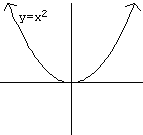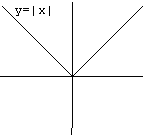| << Chapter < Page | Chapter >> Page > |
When solving equations that involve radicals , begin by asking yourself: is there an under the square root? The answer to this question will determine the way you approach the problem.
If there is not an under the square root—if only numbers are under the radicals—you can solve much the same way you would solve with no radicals at all.
| Sample problem: no variables under radicals | |
| Get everything with an on one side, everything else on the other | |
| Factor out the | |
| Divide, to solve for |
The key thing to note about such problems is that you do not have to square both sides of the equation . may look ugly, but it is just a number—you could find it on your calculator if you wanted to—it functions in the equation just the way that the number 10, or , or π would.
If there is an under the square root, the problem is completely different. You will have to square both sides to get rid of the radical. However, there are two important notes about this kind of problem.
Both of these principles are demonstrated in the following example.
| Sample problem with variables under radicals | |
| Isolate the radical before squaring! | |
| Now, square both sides | |
| Multiply out. Hey, it looks like a quadratic equation now! | |
| As always with quadratics, get everything on one side. | |
| Factoring: the easiest way to solve quadratic equations. | |
| or | Two solutions . Do they work? Check in the original equation ! |
| Check | Check |
| Not equal! | |
So the algebra yielded two solutions: and –1. Checking, however, we discover that only the first solution is valid. This problem demonstrates how important it is to check solutions whenever squaring both sides of an equation.
If variables under the radical occur more than once, you will have to go through this procedure multiple times. Each time, you isolate a radical and then square both sides.
| Sample problem with variables under radicals multiple times | |
| Isolate one radical. (I usually prefer to start with the bigger one.) | |
| Square both sides. The two -radical equation is now a one -radical equation. | |
| Isolate the remaining radical, then square both sides again.. | |
| In this case, we end up with only one solution. But we still need to check it. |
Remember, the key to this problem was recognizing that variables under the radical occurred in the original problem two times . That cued us that we would have to go through the process—isolate a radical, then square both sides—twice, before we could solve for . And whenever you square both sides of the equation, it’s vital to check your answer(s)!
Why is it that—when squaring both sides of an equation—perfectly good algebra can lead to invalid solutions? The answer is in the redundancy of squaring. Consider the following equation:
False. But square both sides, and we get...
25 = 25 True. So squaring both sides of a false equation can produce a true equation.
To see how this affects our equations, try plugging into the various steps of the first example.
| Does work here? No, it does not. | |
| How about here? No, produces the false equation 1=–1. | |
| Suddenly, works. (Try it!) |
When we squared both sides, we “lost” the difference between 1 and –1, and they “became equal.” From here on, when we solved, we ended up with as a valid solution.
Test your memory: When you square both sides of an equation, you can introduce false answers. We have encountered one other situation where good algebra can lead to a bad answer . When was it?
Answer: It was during the study of absolute value equations, such as . In those equations, we also found the hard-and-fast rule that you must check your answers as the last step.
What do these two types of problem have in common? The function actually has a lot in common with . Both of them have the peculiar property that they always turn and into the same response. (For instance, if you plug –3 and 3 into the function, you get the same thing back.) This property is known as being an even function . Dealing with such “redundant” functions leads, in both cases, to the possibility of false answers.
The similarity between these two functions can also be seen in the graphs: although certainly not identical, they bear a striking resemblance to each other. In particular, both graphs are symmetric about the y-axis, which is the fingerprint of an “even function”.



Notification Switch
Would you like to follow the 'Math 1508 (lecture) readings in precalculus' conversation and receive update notifications?